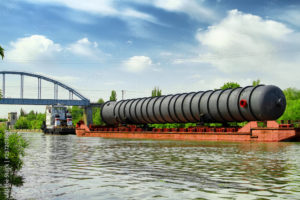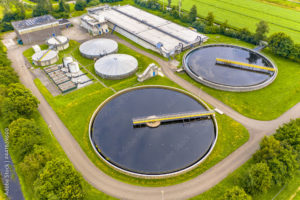In today’s world, where sustainable practices and environmental consciousness are becoming increasingly important, agriculture is no exception. Farmers are seeking innovative solutions to not only increase crop yield but also minimize their environmental impact. That’s where urea-based fertilizers come into the picture.
Urea-based fertilizers have been revolutionizing the agriculture industry, offering a sustainable and effective alternative to traditional fertilizers. These fertilizers contain urea, a compound that provides essential nutrients for plants while reducing nitrogen leaching and greenhouse gas emissions.
By using urea-based fertilizers, farmers can enjoy several benefits. Firstly, these fertilizers are highly efficient, ensuring that a larger proportion of nitrogen is utilized by the crops, resulting in higher yields. Additionally, their controlled-release properties allow for a gradual nutrient release, reducing the risk of nutrient loss and maximizing plant uptake.
Moreover, urea-based fertilizers contribute to minimizing negative environmental effects. Their reduced nitrogen leaching helps preserve water quality, while minimal greenhouse gas emissions support climate change mitigation efforts.
With the integration of urea-based fertilizers, sustainable agriculture is no longer just a dream but a reality. By adopting this innovative approach, farmers can enhance crop productivity while fostering environmental stewardship.
The role of fertilizers in crop yield and environmental impact
Fertilizers play a crucial role in modern agriculture by providing essential nutrients to crops. These nutrients, such as nitrogen, phosphorus, and potassium, are necessary for plant growth and development. However, the use of traditional fertilizers has led to several environmental concerns.
Traditional fertilizers are typically water-soluble, which means that once applied to the soil, they can easily be washed away by rainfall or irrigation, leading to nitrogen leaching. This leaching not only degrades water quality but also contributes to the formation of harmful algal blooms in bodies of water. Additionally, traditional fertilizers often release nutrients in a rapid and uncontrolled manner, leading to nutrient loss and inefficient plant uptake. Furthermore, the production and use of traditional fertilizers result in significant greenhouse gas emissions, contributing to climate change.
Traditional fertilizers and their drawbacks
Urea-based fertilizers offer a sustainable and efficient alternative to traditional fertilizers. These fertilizers contain urea, a compound that is widely used as a nitrogen source in agriculture. Urea is highly soluble in water, making it readily available for plant uptake. Additionally, urea-based fertilizers have the advantage of being highly efficient, with a large proportion of nitrogen being utilized by the crops. This efficiency translates into higher crop yields and reduced fertilizer requirements.
One of the key benefits of urea-based fertilizers is their controlled-release properties. Unlike traditional fertilizers, urea-based fertilizers release nutrients gradually over time, ensuring a steady supply of nutrients to the plants. This controlled-release mechanism not only reduces the risk of nutrient loss but also maximizes plant uptake. As a result, farmers can achieve optimal crop growth while minimizing the environmental impact of fertilizer use.
The benefits of urea-based fertilizers
Urea-based fertilizers work by providing plants with nitrogen, which is an essential nutrient for growth and development. When urea-based fertilizers are applied to the soil, they undergo a process called hydrolysis, where urea is converted into ammonium ions. These ammonium ions are then converted into nitrate ions through a process called nitrification, making them available for plant uptake.
The controlled-release properties of urea-based fertilizers are achieved through the use of urease inhibitors or polymer coatings. These additives slow down the hydrolysis process, allowing for a gradual release of nitrogen over time. This controlled-release mechanism not only extends the availability of nutrients to the plants but also reduces the risk of nutrient loss through leaching or volatilization.
How urea-based fertilizers work
Numerous case studies have demonstrated the positive impact of urea-based fertilizers on crop yield. For example, a study conducted on wheat crops showed that the use of urea-based fertilizers resulted in higher grain yield compared to traditional fertilizers. The controlled-release properties of urea-based fertilizers ensured a steady supply of nitrogen to the plants, promoting optimal growth and development.
Similarly, a study carried out on corn crops revealed that urea-based fertilizers significantly increased crop productivity compared to traditional fertilizers. The controlled-release mechanism of urea-based fertilizers allowed for a more efficient utilization of nitrogen, resulting in higher grain yield and improved plant health.
These case studies highlight the potential of urea-based fertilizers in enhancing crop yield and productivity. By providing a steady and efficient supply of nutrients, urea-based fertilizers can help farmers achieve sustainable and profitable agricultural systems.
Case studies on the impact of urea-based fertilizers on crop yield
In addition to their positive impact on crop yield, urea-based fertilizers offer several environmental benefits. One of the main advantages is their reduced nitrogen leaching compared to traditional fertilizers. The controlled-release mechanism of urea-based fertilizers minimizes the loss of nitrogen through leaching, thereby preserving water quality and preventing the contamination of water bodies.
Furthermore, urea-based fertilizers contribute to climate change mitigation efforts by minimizing greenhouse gas emissions. Traditional fertilizers, such as ammonium nitrate, release nitrous oxide, a potent greenhouse gas, during the nitrification process. In contrast, urea-based fertilizers produce lower amounts of nitrous oxide, making them a more environmentally friendly choice.
The combination of reduced nitrogen leaching and minimal greenhouse gas emissions makes urea-based fertilizers an attractive option for farmers looking to reduce their environmental impact. By adopting these fertilizers, farmers can contribute to sustainable agriculture practices and support the preservation of ecosystems.
Environmental benefits of urea-based fertilizers
While urea-based fertilizers offer numerous benefits, they also present some challenges and limitations. One of the main challenges is the risk of nitrogen loss through volatilization. Urea, the main component of urea-based fertilizers, can be converted into ammonia gas when exposed to high temperatures or alkaline soil conditions. This ammonia gas can be lost to the atmosphere, leading to a decrease in fertilizer efficiency.
To mitigate this challenge, farmers can adopt best practices such as incorporating urea-based fertilizers into the soil or applying them during periods of cooler temperatures. Additionally, the use of urease inhibitors can help minimize ammonia volatilization, ensuring a more efficient utilization of nitrogen.
Another limitation of urea-based fertilizers is their reliance on soil microbes for the conversion of urea into plant-available forms of nitrogen. Factors such as soil pH, temperature, and moisture can influence the activity of these microbes, affecting the release of nutrients from urea-based fertilizers. Therefore, it is important for farmers to consider soil conditions and ensure optimal conditions for microbial activity to maximize the benefits of urea-based fertilizers.
Challenges and limitations of urea-based fertilizers
To maximize the benefits of urea-based fertilizers and promote sustainable agriculture, farmers can follow several best practices. Firstly, it is important to conduct soil tests to assess nutrient levels and determine the appropriate fertilizer application rate. This ensures that crops receive adequate nutrients without risking nutrient loss or environmental contamination.
Secondly, farmers should consider the timing and method of fertilizer application. Applying urea-based fertilizers at the right time, such as during crop growth stages with high nutrient demand, can optimize nutrient uptake and minimize losses. Additionally, adopting precision application techniques, such as banding or side-dressing, can further enhance fertilizer efficiency by targeting nutrients to the root zone.
Furthermore, integrating urea-based fertilizers with other sustainable agricultural practices, such as crop rotation, cover cropping, and conservation tillage, can promote soil health and nutrient cycling. These practices help improve soil structure, retain nutrients, and reduce the need for excessive fertilizer inputs.
Ultimately, the successful integration of urea-based fertilizers into sustainable agriculture requires a holistic approach that considers soil health, nutrient management, and environmental stewardship.
Best practices for using urea-based fertilizers in sustainable agriculture
As the demand for sustainable agricultural practices continues to grow, urea-based fertilizers offer a promising solution to enhance crop yield while minimizing environmental impact. Their efficiency, controlled-release properties, and reduced nitrogen leaching make them a valuable tool for farmers seeking to achieve sustainable and profitable agricultural systems.
However, it is important to recognize the challenges and limitations associated with urea-based fertilizers and adopt best practices to optimize their benefits. By considering soil conditions, implementing appropriate application techniques, and integrating urea-based fertilizers with other sustainable practices, farmers can unlock the full potential of these fertilizers.
In the future, advancements in fertilizer technology and research will likely further improve the performance of urea-based fertilizers, making them an even more attractive option for sustainable agriculture. By harnessing the power of urea-based fertilizers, farmers can contribute to the preservation of natural resources, promote ecosystem health, and ensure food security for future generations.
Conclusion: The future of urea-based fertilizers in sustainable agriculture
Urea-based fertilizers have been revolutionizing the agriculture industry, offering a sustainable and effective alternative to traditional fertilizers. These fertilizers contain urea, a compound that provides essential nutrients for plants while reducing nitrogen leaching and greenhouse gas emissions.
One of the key benefits of urea-based fertilizers is their high efficiency. Compared to traditional fertilizers, these fertilizers ensure that a larger proportion of nitrogen is utilized by the crops, resulting in higher yields. This increased efficiency not only leads to improved productivity but also reduces the amount of fertilizer needed, minimizing costs for farmers.
Another advantage of urea-based fertilizers is their controlled-release properties. These fertilizers are designed to release nutrients gradually, providing a steady supply of essential elements to the plants over an extended period. This controlled-release mechanism not only reduces the risk of nutrient loss through leaching but also maximizes plant uptake, further enhancing crop yield.
Moreover, urea-based fertilizers contribute to minimizing negative environmental effects. Traditional fertilizers, such as ammonium-based ones, are known for their high nitrogen leaching rates, which can lead to water pollution and eutrophication. In contrast, urea-based fertilizers have a lower leaching potential, helping preserve water quality and protect aquatic ecosystems.
Additionally, urea-based fertilizers produce fewer greenhouse gas emissions compared to traditional fertilizers. The use of urea minimizes the release of nitrous oxide, a potent greenhouse gas that contributes to climate change. By reducing these emissions, urea-based fertilizers support global climate change mitigation efforts and help create a more sustainable future.








